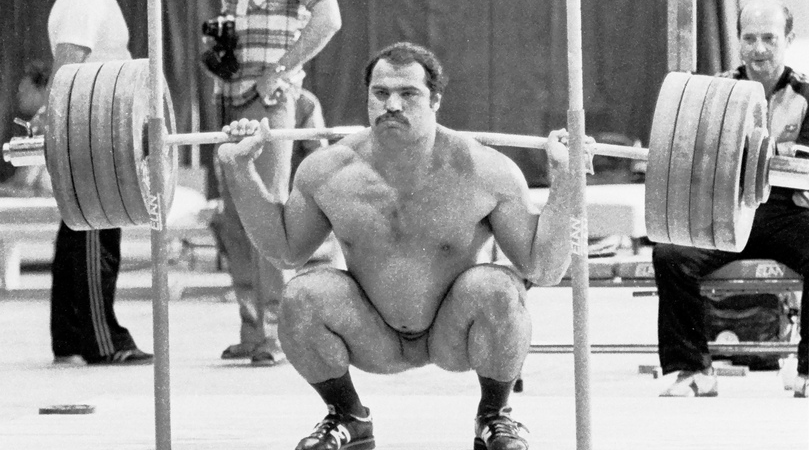One of the most frequently asked questions in the training world is what is better - a low bar squat or a high bar squat?
Similar to the discussion between squatting with your heels elevated and squatting with your feet flat, there is no such thing as a "perfect" squat.
Both techniques, the low bar squat, which I call the power squat, and the high bar squat, which I call the Olympic squat, have their advantages.
It does not say which variant is better, but when is which variant advantageous.
First of all, what are the differences between a power squat and the Olympic squat:
power squat
- You place the barbell low on your back so it rests on the mid-trap and back shoulder.
- You use a wider grip.
- You put your elbows behind the dumbbell.
- You initiate the release of the dumbbell by pushing your hips back.
- You keep your knees directly over your hocks the entire time.
- You lower the dumbbell until your thighs are parallel to the floor or slightly below it.
- You bring the weight back up by primarily stretching your hips.
Olympic squat
- You place the barbell high on your back so it rests on the upper trapeze.
- You use a tight grip.
- You keep your elbows under the bar the whole time.
- You initiate the release of the bar by pushing your knees forward.
- You push your knees in front of your toes.
- You lower the barbell until your hamstrings completely cover your calves.
- You bring the weight back up by straightening your knees and hips.
Now that we've looked at the technical differences in performing these two exercises, let's dig a little deeper into their individual benefits:
Benefits of the power squat
- Higher loads - Due to the higher proportion of hip extension, less knee flexion and a smaller range of motion, higher loads can be moved in the power squat.
- It's more specific to the sports of powerlifting and strongman - Powerlifting is all about moving as much weight as possible through a specific range of motion. The technical advantage of the power squat makes it the #1 choice for powerlifters and strongmen.
- Easier to Learn – Especially for beginners, who often lack mobility and muscular balance, the power squat is easier to learn from a recruitment and range of motion perspective.
Benefits of the Olympic Squat
- Increased Vastus Medialis (VMO) Recruitment – With increased knee flexion, greater range of motion, and knees moving past the toes, the Olympic Squat increases vastus medialis recruitment, one of the key knee stabilizers.
- Improving and Maintaining Mobility - All major joints - ankle, knee, hip and shoulder - must have very good mobility in order to get into the bottom position of the Olympic squat. The rear thigh covers the calf completely and the elbows remain vertically under the barbell.
- Improving and Maintaining Muscular Balance - In order to get into the bottom position of the Olympic squat and come back up with an upright posture, all the major muscles of the hip and knee must be balanced. Otherwise, your knees will fall inward, you'll lean too much forward when you lower the weight, or you'll push your hips back when you try to stand up.
Both variations of the squat have their advantages, which you can use in your training or in the training of your clients or athletes based on their weaknesses and goals.
One of the best examples of using these two variations comes from Ed Coan, the greatest powerlifter in history and the only man to squat over 1000lbs raw in over 18 shows. His strategy was, He used the Olympic squat in the offseason because it was his weaker squat and he strongly believes in strengthening the weakest link in the chain. After starting his preparation for a competition about 12 weeks before the actual competition, Ed switched to the power squat as it is much more specific to his sport. Given his achievements, this is a very valuable take home point.
Personally, in my daily work at YPSI, I primarily write programs and train personal training clients and athletes. In both cases, I only use the Olympic squat. Primarily for its benefits in terms of muscular balance and mobility. What is the basis for functional and sustainable progress in strength training...
Ed Coan will come to Germany for the first time this fall and hold the YPSI Powerlifting Seminar with Ed Coan at the YPSI in Stuttgart. Details will follow in the coming weeks...
Image: One of the most popular images of an Olympic squat with Russian world weightlifting champion Anatoly Pisarenko circa 1981.

